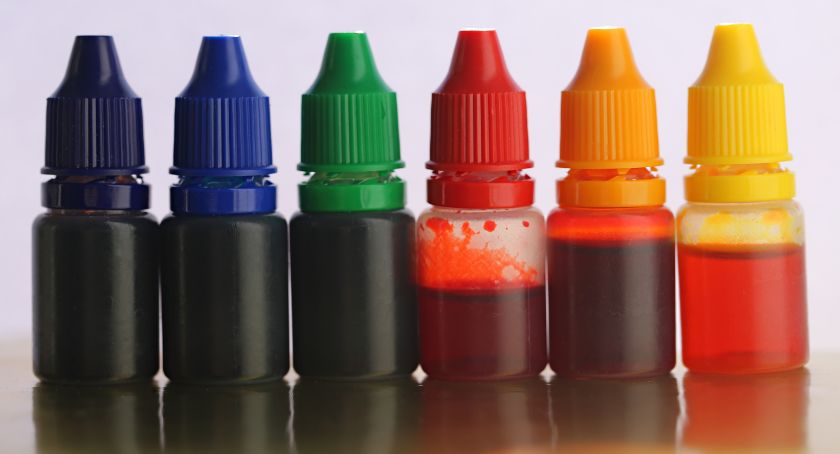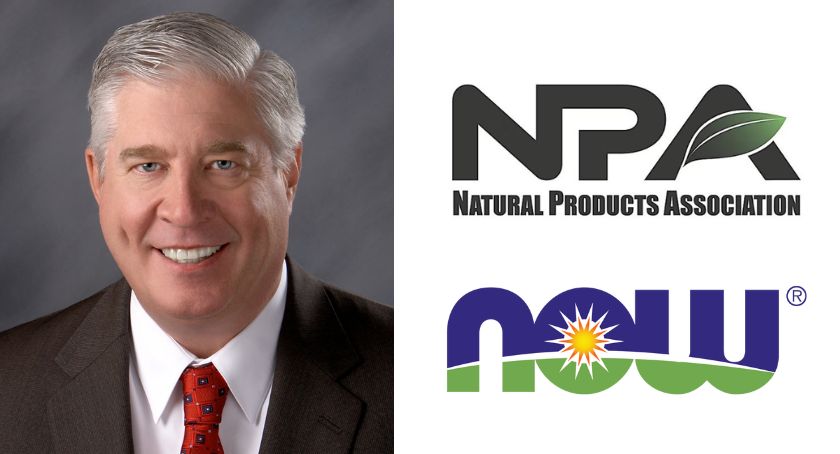Features
Adding a Woman’s Touch to Wellness
As they encounter unique health challenges over the course of their lives, women crave condition-specific products.

By: Sean Moloughney

The laundry list of health issues that women must tend to can be daunting. From heart disease, osteoporosis and PMS to pregnancy, menopause and graceful aging, there seems to be no shortage of market opportunities for companies looking to attract women from all walks of life.
In today’s fast-paced society—juggling family, work and health—women want proven solutions that present real results. And as aging, more knowledgeable consumers look to take healthcare into their own hands, preventative solutions are more than a growing trend—they are quickly becoming the norm.
“Modern life increasingly puts pressure on our bodies and our health,” said Christina Khoo, senior manager, Research Sciences, Ocean Spray Cranberries, Lakeville-Middleboro, MA. “This can be particularly true of women. Although men are increasingly taking on more responsibility at home, women are often in full-time work and shoulder a majority of the household and childcare tasks. Recognizing that good diet and regular exercise are key to maintaining health, women are seeking guilt-free and convenient options that are easily incorporated into their busy lives.”
Heart Health & Omega 3s
More than 42 million women in the U.S. are currently living with some form of cardiovascular disease (CVD), according to a 2010 report from the American Heart Association, which was published in the peer-reviewed journal Circulation. Killing more than a third of American women, heart disease remains the leading cause of death. In addition, more than 200,000 women die each year from heart attacks—five times as many women as breast cancer.
Benefiting from a qualified heart health claim, omega 3 fatty acids have clearly arrived on the main stage in the U.S., where dietary supplement sales of omega 3s eclipsed $1 billion in 2009, according to Adam Ismail, executive director of the Global Organization for EPA and DHA Omega 3s (GOED). Omega 3 food sales represent an additional $1 billion, per Packaged Facts. Worldwide, omega 3 finished products—including pharmaceuticals, functional foods and infant formulas—represent a $13 billion industry, Mr. Ismail added.
Perhaps indicative of the reach that omega 3s have developed, this year GlaxoSmithKline’s LOVAZA reached blockbuster drug status as an FDA-approved prescription product—derived from omega 3 fish oil—which is designed to lower triglyceride levels.
While regulatory authorities in Europe and the U.S. differ over Dietary Reference Values, and industry proponents call for fresh reviews based on the most recent scientific literature, consumers of all ages and demographics continue to speak—loudly—through their purchasing patterns. In fact, for the first time ever, more dietary supplement users chose omega 3s (74%) compared to multivitamins (72%), according to a 2010 survey from ConsumerLab.com, White Plains, NY.
Propelling sales, research regarding omega 3s—and a growing cast of health roles—has proliferated. In a recent study published in the Journal of the American Medical Association (JAMA), researchers investigated the ability of omega 3 fatty acids to prolong the survival of coronary heart disease patients. They looked at omega 3 fatty acid blood levels and compared them with temporal changes in telomere length, an emerging marker of biological age. Scientists believe as telomeres shorten over time that the eventual result is cell death. The prospective cohort study examined 608 ambulatory outpatients in California with stable coronary artery disease who were recruited from the Heart and Soul Study between September 2000 and December 2002 and followed up to January 2009.
Researchers measured leukocyte telomere length at baseline and again after five years of follow-up. They found that individuals in the lowest quartile of DHA + EPA experienced the fastest rate of telomere shortening, whereas those in the highest quartile experienced the slowest rate.
In another recent study, specific to women, researchers examined the association of fatty fish and marine omega 3 with heart failure (HF) in a population of middle-aged and older women. Participants in the Swedish Mammography Cohort, aged 48-83 years, completed food-frequency questionnaires. Women without any history of HF, myocardial infarction or diabetes at baseline (n=36,234) were followed from January 1998 until December 2006 for HF hospitalization or mortality through Swedish inpatient and cause-of-death registers; 651 women experienced HF events.
Researchers concluded that moderate consumption of fatty fish (1-2 servings per week) and marine omega 3 fatty acids were associated with a lower rate of first HF hospitalization or death in this population. Results were published in the European Journal of Clinical Nutrition this past March.
Fat Facts
Alongside heart disease, obesity is an underlying risk factor for a variety of related conditions, including arthritis, birth defects, breast cancer, endometrial cancer, gallbladder disease, infertility and urinary stress incontinence. More than 62% of adult women in the U.S. are overweight and 34% are obese, leaving them at risk for many of these conditions.
Compared to men, higher rates of obesity and arthritis among women leaves them at greater risk of living with disability later in life, according to a study involving 5888 men and women over the age of 65 who were enrolled in the Cardiovascular Health Study, which was sponsored by the National Heart, Lung and Blood Institute. Researchers found that women suffered up to two-and-a-half times more disabilities than men of the same age. Higher rates of obesity and arthritis among these women explained up to 48% of the gender gap in disability, researchers concluded. In addition to obesity and arthritis, the study found the women were much more likely than men to fracture a bone and suffer from vision problems and bronchitis.
In recent years, the scientific community has indicted trans fats for their association with obesity, which can lead to endometriosis, an often debilitating and painful condition in which pieces of the uterine lining grow outside the womb, sometimes sticking to other organs. There is no cure for endometriosis and it can cause infertility. According to a study involving 70,709 women followed for 12 years in the U.S. Nurses Health Study, women whose diets are rich in foods containing omega 3 oils might be less likely to develop endometriosis, compared to those whose diets are high in trans fats.
Results published in Human Reproduction in March showed that women who ate the highest amount of long-chain omega 3 fatty acids were 22% less likely to be diagnosed with endometriosis than those who ate the least. Meanwhile, those who ate the most trans fats had a 48% increased risk compared with those who ate the least.
An additional study published in the British Journal of Nutrition in 2009 examined the omega 3 fatty acid levels of 124 adults of varying weights (21 healthy volunteers, 63 obese and 40 overweight). “The authors reported that the obese participants had significantly lower amounts of omega 3s in their blood,” said Douglas Bibus, PhD, a scientific advisor to Coromega, Vista, CA. “This study also found that higher levels of omega 3 fatty acids were associated with a healthier body mass index, hip circumference and waste circumference.”
Calcium + Vitamin D
In addition to heart health and weight issues, bone health continues to be a top concern for many women throughout their lives, especially during menopause. Osteoporosis affects about 8 million women in the U.S., and as many as half of all women older than 50 will break a bone due to this disease.
Calcium remains the most studied nutrient for building and maintaining strong bones while vitamin D continues to gain recognition for its ability to increase calcium absorption. Other nutrients like vitamin K and genistein—an isoflavone found in plants like soy and kudzu—also offer compelling evidence that they increase bone density.
The Women’s Health Initiative Calcium and Vitamin D (CaD) Study, which involved a total of 36,282 postmenopausal women—making it the largest randomized clinical trial of calcium and vitamin D supplements—was designed to determine the effects of calcium and vitamin D supplements on the risk of hip fractures (and colorectal cancer) in postmenopausal women. The effects of calcium + vitamin D on other fractures and bone density were also studied.
Participants received 1000 mg of calcium and 400 IU of vitamin D or placebo. Over an average of seven years, women who took the active supplements regularly had 29% fewer hip fractures than those taking placebo (on average, 10 compared to 14 cases per 10,000 women each year), which was a statistically significant difference. Among women 60 years of age and older, those assigned to active CaD had a 21% decreased risk of hip fracture compared to women 60 and over who were taking placebo (17 compared to 23 cases per 10,000 women each year). This difference was also statistically significant. Results were published in the New England Journal of Medicine in February 2006.
Interestingly, results from this study also showed a potential weight management role for calcium and vitamin D, as these nutrients may stimulate the breakdown of fat cells and suppress the development of new ones, according to findings published in the Archives of Internal Medicine in May 2007.
Women in the group taking calcium plus vitamin D weighed an average of 0.28 pounds less than those taking the placebo pills, which is a small but statistically significant difference in weight change. Women taking active pills were also less likely to gain weight. The greatest benefits were seen in women whose total calcium intakes at the start of the study were below 1200 mg per day. In these women, when compared to those taking placebo, those taking the calcium and vitamin D supplements had a lower risk of gaining weight, and had a higher likelihood of maintaining a stable weight (within 2.2 pounds of their starting weight) or losing weight (more than 2.2 pounds), after three years in the study. Researchers suggested that further research should evaluate the effect of calcium supplementation, combined with caloric restriction and physical activity, on preventing weight gain.
According to Packaged Facts, diet foods and drinks—consisting of weight loss bars and snacks, drinks, frozen meals and diet desserts—reached $18 billion worldwide in 2009. Meanwhile, U.S. consumers alone spend nearly $2 billion on weight-loss supplements each year, according to Nutrition Business Journal, Boulder, CO. With so many competitors vying for space in this market, calcium isn’t usually part of the discussion. Still, the logical connection between weight issues, heart disease and bone health—alongside many other related conditions—remains convincing, especially when considering most women are simply trying to meet general health and wellness goals.
Herbs, Pregnancy & PMS
Complementary and alternative medicine plays a unique role in specific women’s health issues. In fact, women are more likely than their male counterparts to incorporate herbal remedies into their healthcare regimen, according to Christopher Hobbs, director of herbal science with Rainbow Light, Santa Cruz, CA—a popular brand among women. He is also a licensed herbalist and PhD candidate at the University of California, Berkeley.
For instance, about 10% of pregnant women in the U.S. use some form of herbal product, according to a study published in the American Journal of Obstetrics and Gynecology. The prevalence of reported herbal use three months before or during pregnancy was about 11%. During pregnancy, prevalence was around 9% and was highest in the first trimester. Researchers evaluated patterns of herbal use among U.S. women based on data from the National Birth Defects Prevention Study—an ongoing, population-based, case-control study. Analysis included 4239 women from 10 centers in the U.S. who delivered infants without major birth defects from 1998–2004. Higher prevalence was associated with age greater than 30 years and education more than 12 years. Use varied considerably by state (5–17%). Ginger and ephedra were the most commonly reported products taken early in pregnancy; teas and chamomile were most commonly reported throughout pregnancy.
According to Mr. Hobbs’ book Women’s Herbs, Women’s Health, co-authored with Kathi Keville, director of the American Herb Association, “Herbal remedies are time-honored allies for relieving symptoms associated with women’s health problems. They can even help us create balance, correct deficiencies, and restore the health and integrity of underlying tissues, organs, and systems that directly affect menstrual cycles, moods and emotions, and other aspects of health.”
For the most part, the modern healthcare community and pharmaceutical companies have neglected women’s needs as they relate to premenstrual syndrome (PMS), prompting many women to try herbal remedies. Vitex agnus-castus (Chasteberry) remains the most popular European herbal remedy for both PMS and menopausal symptoms, according to Mr. Hobbs. Scientists believe that vitex, as a hormone regulator, may help moderate mood swings, relieve depression and treat fluid retention, breast tenderness and food cravings.
According to a randomized, double-blind, placebo-controlled study involving 67 Chinese women, vitex agnus-castus (BNO 1095) was effective in treating moderate to severe PMS, especially with regard to negative symptoms and water retention. Results were published in Gynecological Endocrinology in March this year.
“Vitex is unique in that it reduces prolactin levels in the body,” according to Mr. Hobbs. “And increased prolactin has been associated with symptoms of PMS. This is a very well proven, widely used and popular herb. I’ve been recommending it in my practice since the 1980s. There’s a good body of scientific knowledge from clinical trials. I don’t think you could find a more credible herb for women’s health.”
Globally, Mr. Hobbs said that dong quai (Angelica sinensis) is also among the most popular herbs used in Traditional Chinese Medicine as a blood tonic and a pain reliever for cramps associated with PMS.
Paula Simpson, executive director, Isocell North America, Toronto, Ontario, Canada, who has also been a scientific evaluator and regulatory consultant for top nutraceutical companies worldwide, said that gamma-linolenic acid (GLA) is often recommended for PMS. “GLA is an essential fatty acid that can help reduce inflammation,” she noted. “The simplest way to increase your GLA levels is to take evening primrose oil, borage or black currant seed oil. It is thought that some women with PMS are deficient in GLA, possibly due to a defect in their ability to convert linoleic acid to GLA. This could be important because GLA and its metabolites are precursors to the anti-inflammatory prostaglandin E1.”
Ginkgo biloba also may relieve PMS fluid retention and its consequences, such as breast swelling and tenderness, she said. “The proposed theory is that it inhibits platelet-activating factor (PAF). PAF normally triggers inflammation, leading to vascular congestion, edema and breast swelling. Therefore, it is thought that ginkgo might have an anti-inflammatory effect.”
Pyridoxine (vitamin B6) is also sometimes recommended for PMS. One theory is that PMS might be related to low dopamine levels, Ms. Simpson said. “Pyridoxine is a co-factor needed for dopamine production. Another theory is that pyridoxine and other B vitamins might prevent fat accumulation in the liver. This could improve estrogen metabolism and potentially affect PMS symptoms.”
Menopausal Problems
For many women, menopause can be a challenging transitional time. “Many more women are turning to phytoestrogens (plant estrogens) and other natural products for menopausal symptoms,” said Isocell’s Ms. Simpson. “The three main kinds of phytoestrogens are isoflavones, lignans and coumestans. Isoflavones are the most potent and the most common phytoestrogens in supplements. Phytoestrogens are also found in many common food sources.”
As a source of phytoestrogens, black cohosh is among the leading herbs recommended for symptoms of menopause, said Rainbow Light’s Mr. Hobbs. He also noted red clover, soy, and kudzu and dong quai because of their high genistein content.
“The studies are getting better and better and show real benefits for women,” he said of genistein specifically, “particularly as we know that taking synthetic estrogen can be problematic, especially the longer you take it.” Still, Mr. Hobbs said he would like to see more focus and more money committed to the clinical evaluation of natural products.
Don Stanek, director of sales, Linnea, Easton, PA, said his company manufactures HMRlignan, which has been shown to be a major booster of enterolactone, a mammalian lignan necessary for better health. “HMRlignan provides benefits for breast health in women, decreases hot flashes by 50%, and because of its ability to increase enterolactone, may assist in weight management. HMRlignan also provides substantial cardiovascular benefits since this has become a major concern for women.”
Jeff Wuagneux, president and CEO, RFI Ingredients, Blauvelt, NY, said mental concentration and focus is an important issue for many women, especially during menopause. “It is well established that menopause and its hormonal swings adversely affect a woman’s ability to concentrate and focus. Menopause is often accompanied by memory loss, disorientation and a general state of mental confusion during this life transition stage. In addition, menopausal women have a harder time sleeping, which also taxes memory and focus. Menopausal women may also experience added stress due to other symptoms such as hot flashes and mood swings.”
RFI recently completed a clinical trial to study the effect of its patented Chocamine ingredient on cognitive function in healthy adults. This proprietary and Generally Recognized as Safe (GRAS) chocolate-based ingredient contains compounds associated with the many health benefits of chocolate.
For this study, 30 subjects received 1000 mg of Chocamine, 1000 mg of Chocamine Plus (with caffeine) or placebo, and completed a variety of objective tasks. Attention span, working memory, reaction time, non-verbal problem solving and other aspects of mental functioning were assessed using a prominent neurocognitive research tool called the IMPACT Cognitive Assessment Test.
Researchers reported positive trends in a variety of cognitive functions among participants who took Chocamine products, including a 49% improvement on tests evaluating short-term memory and visual-motor response speed for the Chocamine Plus group and a 39% increase in the Chocamine group. “This study confirms that RFI’s Chocamine is a perfect ingredient for women who are experiencing cognitive issues such as loss of short-term memory, focus and concentration,” Mr. Wuagneux offered.
Alongside impaired cognitive function, some menopausal women may experience symptoms of depression, according to Dr. Bibus, Coromega’s scientific advisor. “The potential for omega 3 as a treatment option for depression is in its infancy but several studies have reported improvements in symptoms on a high omega 3 diet. Several research studies have also documented that people suffering from depression have significantly lower levels of omega 3 in their blood.”
‘It Takes Two, Baby’
With so many products designed to improve men’s sexual health and performance, women are often left out of the equation. But after all, “it takes two to tango.” Several companies have caught on to the idea that some women need a little more encouragement, especially as they age.
For example, the product ArginMax, from Daily Wellness Company, Honolulu, HI, combines L-arginine, Panax ginseng, ginkgo biloba, damiana leaf, vitamins A, C, E, B6 and B12, biotin, folate, niacin, pantothenic acid, riboflavin, thiamin, as well as calcium, iron and zinc.
According to the company, L-arginine has been well established as a nitric oxide precursor and ginseng may upregulate this conversion process. Meanwhile, ginkgo facilitates microvascular circulation involved in sexual arousal mechanisms and damiana has been shown to affect hormone receptors and reduce anxiety. The mechanism for ArginMax is believed to involve a central feedback loop coupling enhancement of peripheral circulation and the stimulation of libido by the brain.
A double-blind, placebo-controlled study published in the Journal of Sex & Marital Therapy in 2006 (Volume 32, Issue 369), showed improvement in women’s sexual desire and overall satisfaction among women of differing menopausal status following nutritional supplementation with ArginMax. The study included 108 women, ages 22-73, enrolled as participants lacking in sexual desire. The Female Sexual Function Index (FSFI) was used to evaluate the level of sexual health before and after completing the four-week long study.
At the end of four weeks, 72% of the pre-menopausal women had increased levels of sexual desire and 68% increased in satisfaction with overall sex life. Among the peri-menopausal women, 79% increased in satisfaction with their sexual relationships and 64% improved in vaginal dryness and degree of clitoral sensation.
UTIs & Cranberry
Women of all ages are vulnerable to urinary tract infections (UTIs). In fact, one in five U.S. women will develop UTIs in their lifetime, according to the Kidney and Urology Foundation of America. Infections of the urinary tract are the second most common type of infection in the body and they account for more than 8 million doctor visits each year, according to the National Institutes of Health (NIH).
Cranberries have become a popular and effective ingredient in combating bacterial infections. Dean Mosca, president, Proprietary Nutritionals, Inc., Kearny, NJ, said his company’s Cran-Max is unique among cranberry supplements and has been shown in a clinical trial to be on par with the number-one UTI prescription trimethoprim. “In addition, a clinical study, recently published in the journal Spinal Cord, indicated that the use of Cran-Max cranberry concentrate for people with spinal cord injury resulted in a significant reduction in both the incidence of UTI and the number of subjects with a UTI over a 12-month period.”
“The cranberry is a prime example of how fruit can inject health into a product, and also meet the demands of the female market,” said Ocean Spray’s Ms. Khoo. “Packed full of fiber and antioxidants such as vitamin C, quercetin and proanthocyanidins (PACs), this small berry is well known for its health-promoting qualities. Ocean Spray’s ‘One berry, Whole body’ campaign illustrates the cranberry’s potential to promote health throughout the whole body, including the urinary tract, cardiovascular, cellular and gastrointestinal systems.”
Studies suggest the PACs present in cranberries have an anti-adhesion mechanism, which is linked with inhibiting bacterial infection by flushing certain harmful bacteria, such as E. coli, out of the body, she noted. “Recent research conducted by Wing et al in California adds further weight to cranberry’s role in UTI health, suggesting daily consumption of cranberry juice may help reduce the incidence of asymptomatic bacteriuria in pregnant women, which affects 5-12% of women and can cause preterm delivery and low birth weight if left untreated. A study conducted in 2005 also suggests sweetened dried cranberries could have an anti-adhesion effect on bacteria, compared to other dried fruits such as raisins.”
Food industry producers can capitalize on the established health and wellness trend that is set to continue throughout 2010, said Ms. Khoo, citing predictions from Mintel International. “Making everyday foods more beneficial to health, and particularly female health, is a simple way to encourage sales among women. Cranberries can be incorporated into breads, cereals, bars, yogurts and drinks to offer a convenient and tasty option for busy women.”
According to Mr. Mosca, convenience is the ultimate attraction. “Dietary supplements, nutrition bars and beverages all are simple and require no prep time. More women are concerned about additives, the ‘anti-nutrients’ that may add calories, sodium, fat and unnecessary fast-carbs. More are reading labels, scrutinizing the pros and cons. For manufacturers, finding ways of whittling down the unnecessary extras while retaining good taste/mouthfeel and optimal dosing is the challenge.”
Women pay particular attention to research they find in health magazines, Internet sources and social media outlets, he added. “Manufacturers of products geared toward women’s health must make the commitment to communicate actively and assertively, based on facts and not hyperbole. Women also like bargains, so creative partnerships with synergistic brands and products can garner excellent visibility, brand awareness and increase sales.”
Probiotic Solutions
Synergies achieved by combining ingredients have also solidified new partnerships in the nutraceuticals industry. Recently, Valensa International, Eustis, FL, and UAS Laboratories, Eden Prairie, MN, entered a license and supply agreement that provides UAS access to Valensa’s patented Cran-Gyn ingredient for use in a new, patent-pending “triple action” women’s health product called Cran-Gyn DDS. This product combines Lactobacillus acidophilus DDS probiotics with Cran-Gyn—a concentrated, proprietary cranberry/d-mannose formulation. Cran-Gyn DDS offers a low-calorie, natural alternative to women for the management of UTI issues and yeast health management, as well as improvement of digestive health and immune function.
Rising global interest in probiotic solutions for women’s health has also allowed companies like Chr. Hansen to expand their business prospects. Following the company’s acquisition of Canadian Urex Biotech Inc., market penetration for the clinically documented probiotic concept for women has increased. Urex contains two probiotic strains, L. rhamnosus GR-1 and L. reuteri RC-14. Each capsule is guaranteed to contain a minimum of 1 billion colony forming units (CFU) by end of shelf-life. The Urex concept is based on research conducted since 1985, patent-protected and supported by clinical studies documenting efficacy.
According to the company, a daily capsule of Urex taken orally restores and maintains a healthy vaginal flora, which can help reduce the risk of infections. Eleven clinical studies conducted using the oral formulation have been published and others are currently underway.
Graceful Aging & Antioxidants
Women of all lifecycle stages are looking for ways to age gracefully, and many women turn to dietary supplements for the purpose of protecting the skin, said Susan Beck, PhD, LAc, CNS, who has more than 15 years of experience in product development for the dietary supplement and functional food/beverage industry. “As we age, our skin becomes depleted of important antioxidants necessary to protect the skin against the damaging effects of internal and external toxins, such as free radicals.”
When antioxidants like beta-carotene, vitamins C and E and CoQ10 become depleted, the skin’s ability to combat free radicals is compromised, she noted. “We need to consume a wide variety of antioxidants to replenish the antioxidant supply in the skin. In response to the growing demand from women for a dietary supplement that works to fight the signs of aging, Nestlé USA launched a once daily beauty drink called Glowelle to provide the antioxidants women need to help protect and hydrate the inner and outer layers of the skin.”
Glowelle contains a proprietary blend of 19 antioxidants from vitamins, phytonutrients and botanical and fruit extracts that help fight the signs of aging from within. According to the company, it is clinically proven to help increase antioxidant activity in the body, help even skin tone and help protect skin by reducing effects induced by moderate sun exposure.
Recognizing the importance of antioxidants for skin health, Isocell North America developed GliSODin, a dietary supplement that combines super oxide dismutase (SOD) extracted from cantaloupe melon (Cucumis melo LC.) with wheat gliadin biopolymer. The product works as a biological catalyst, rapidly and repeatedly reducing reactive oxygen species. “Like most other protective mechanisms in the body, the production of SOD decreases with age, while we are exposed to increased endogenous and exogenous stressors,” said the company’s Ms. Simpson.
Becoming Part of the Solution
At the end of the day, the nutraceuticals industry has much more work to do if its products are to share the center-stage spotlight with trusted, clinically evaluated ingredients like omega 3s. “We need to bring natural products into mainstream modern healthcare,” said Rainbow Light’s Mr. Hobbs. “But we have to do a better job as an industry of quality control—especially some type of authentication so you know what type of material you have. We need to pay more attention to quality issues like substitution, spiking and dry labbing, which reduce quality, and in the end will hurt the whole industry and prevent us from being a part of the national discussion about healthcare.”
According to Mr. Hobbs, Rainbow Light is “constantly combing the scientific literature” and reevaluating its formulations based on well-designed studies with appropriate study populations, ensuring its products contain efficacious doses. Other companies would be well advised to do the same, he said.
Dr. Beck, lead scientist and nutritionist for the Glowelle brand, agreed, saying it’s important for people to know that ingredients in a product have been thoroughly tested for identity, quality and safety, and that the manufacturer complies with good manufacturing practices. “It’s also important to know that the product has been labeled properly and offers only credible statements backed by scientific research for its use as a dietary supplement.”
Isocell North America’s Ms. Simpson reiterated the importance of committing to science, saying that companies need to live up to their health claims. “Women are willing to pay a premium price for products—if they truly work.”




















